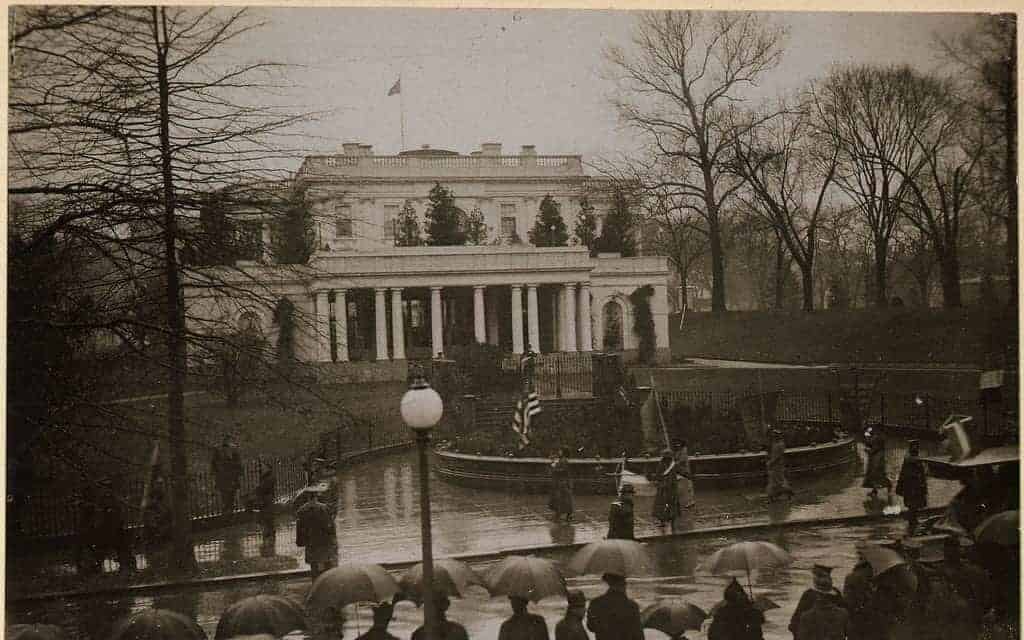When the Founders, male all, completed the Constitution of the United States they left decisions regarding the qualifications for voters to the states. Women in all states but one – New Jersey – were disenfranchised. In 1790 New Jersey extended the right to vote to all inhabitants of the state who were not held in slavery, but 17 years later the right to vote was denied women in the Garden State. The laws of the states denied the right to vote to men too under some circumstances as each state considered who among its citizens was allowed to participate in the electoral process.
Men ran the governments, and men decided who could vote. The process of enfranchising citizens was a long and complicated one. The suffrage movement in America was viewed with alarm by some, amusement by others, and outright fear by many. The United States was not alone in the debate over women’s right to vote. Women in the United Kingdom could vote in Parliamentary elections only under the rarest circumstances throughout the nineteenth century, and Canada too had laws which denied women’s voting rights despite growing pressure from suffragists. In France women were denied the right to vote until 1945, and then had to prove they were not illiterate before exercising the right.

Here are ten events and important persons who labored for decades to allow women to participate in the democratic process in the United States.

The Seneca Falls Convention
Although Kentucky granted limited voting rights to women in 1838, allowing unmarried heads of households to vote on issues related to taxes and education, in 1840 the idea of women voting was considered preposterous. Women were supposed to practice quiet subservience, those who spoke out publicly were considered eccentric at best. In 1831, during the Second Great Awakening, an American Presbyterian minister named Charles Finney urged women to pray aloud alongside men, a decision which was supported by some women and looked upon with consternation among most men. But not all, the following year William Lloyd Garrison welcomed women in the abolitionist societies he organized in the North, urging them to publicly express their views.
The Religious Society of Friends, commonly called the Quakers, were a group leading the discussion about women’s rights and their position in society in general by the 1840s. Quakers considered women and men to be equal and women held the same rights as men in Quaker communities, expressing themselves openly at meetings. A large Quaker community was in the area of Seneca Falls, in western New York. In the summer of 1848 five women, led by Lucretia Mott and Elizabeth Cady Stanton, announced a meeting to be held at the Wesleyan Methodist Chapel in Seneca Falls to address women’s rights. The meeting was scheduled for July 19.
The first day’s meeting was attended by about three dozen men, in addition to a large crowd of women and children. Although the first day had been advertised as being solely for women the men were allowed to remain, though they were requested to maintain silence. Likely the admonition to keep quiet was unnecessary, as few men would have been willing to speak under the circumstances. A list of previously prepared grievances was delivered and discussed. That evening Lucretia Mott delivered an oration, much of it addressed to the men in attendance, urging them to help women achieve the equality denied them by both social norms and the law.
A Declaration of Sentiments, written by five women led by Stanton and Mott and drafted along the lines of the Declaration of Independence was presented on the first day, to be voted upon by the participants of the second day, including men. The grievances in the Declaration of Independence were directed towards George III, Stanton changed that in the Sentiments to be directed towards “mankind” and included, “He has never permitted her to exercise her inalienable right to the elective franchise.” The line caused her husband, Henry Stanton, to leave the area so as to not be associated with the convention.
Stanton also added a resolution which read, “Resolved, that it is the duty of the women of this country to secure to themselves their sacred right to the elective franchise.” The former slave and noted abolitionist Frederick Douglas spoke in favor of the resolution on the afternoon of the second day. When the nation learned of the Seneca Falls Convention the reaction was decidedly mixed. It was the first of many successive conventions held to address the issue of women’s equality and voting rights, which grew larger and more vocal over time. The Declaration of Sentiments was signed by about one third of the attendees on the second day, 68 women and 32 men.

